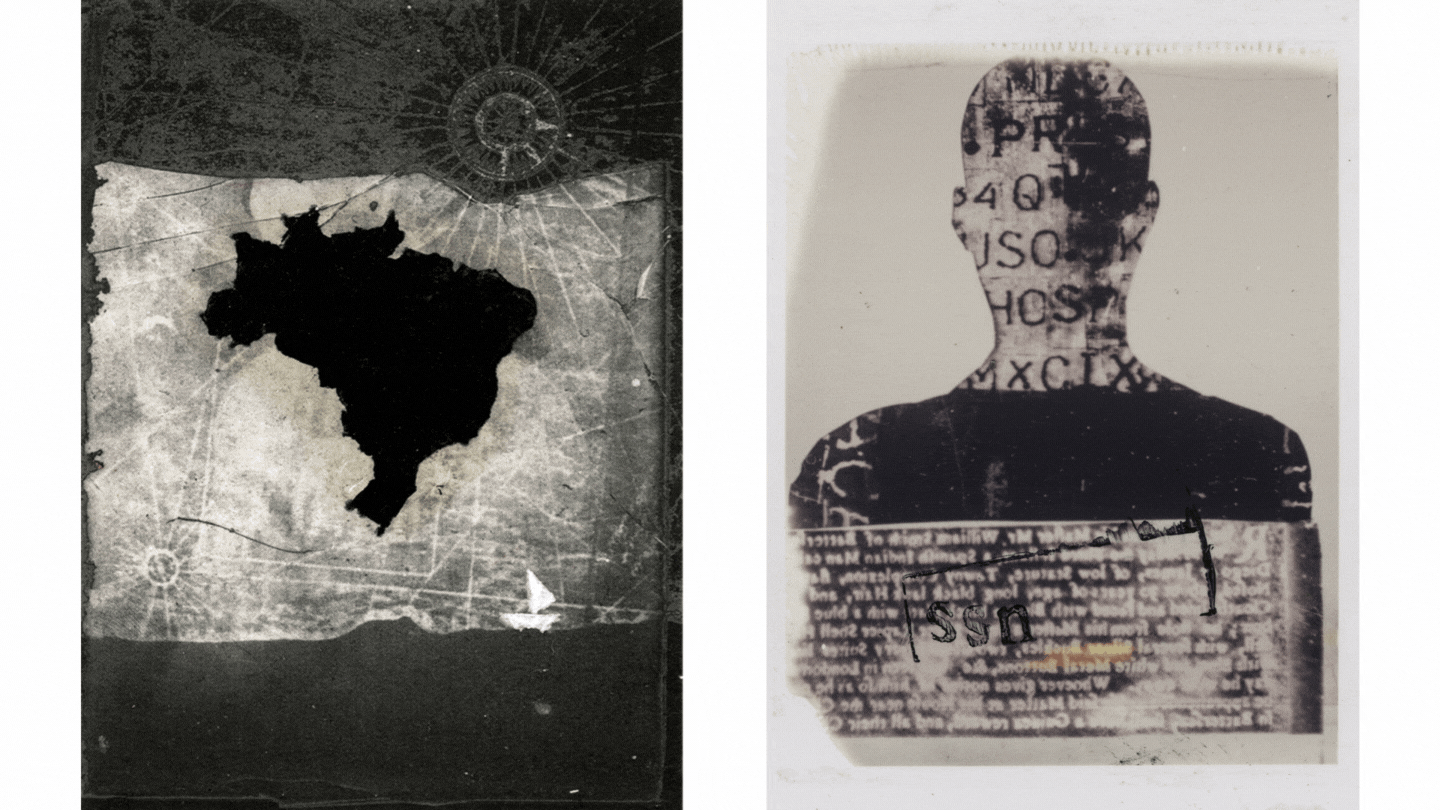September 7, 2022–February 26, 2023
Ipiranga
Rua Bom Pastor, 822
São Paulo-
04203-001
Brazil
Outros Navios: fotografias de Eustáquio Neves (Other Ships: Photographs by Eustáquio Neves) is the title of the broad survey exhibition that revisits nearly 40 years of the production of artist Eustáquio Neves (Juatuba, MG, Brazil, 1955) at Sesc Ipiranga, in São Paulo. Making reference to the tumbeiros or “floating tombs”—European cargo ships that transported thousands of enslaved people from the African continent to Brazil in the up until the 19th century—the show’s title also names the photographer’s most recent series of works. The series brings to the contemporary context, based on the superimposing of photographs taken in urban centers, the evidences of structural racism and symbolic violence in relation to black people, which still persists as the great ill in Brazilian society.
The photographer, of African ancestry and from the state of Minas Gerais, has produced, since the late 1980s, an oeuvre that he himself characterizes as autobiographical—making reference to his ancestrality and to his life experiences. His works mainly reflect on the memory of slavery, as seen in the series Valongo: Cartas ao Mar (Valongo: Letters to the Sea), or about the place of the black person in Brazilian society, as in the series Boa aparência (Good Appearance). According to Neves: “We have lived for nearly four centuries as slaves in Brazil. But until today, 129 years after the abolition of slavery, we continue to be invisible for a large white majority that seems to believe that the country was made exclusively for them.”
The current show is curated by Eder Chiodetto (São Paulo, SP, 1965), one of the main specialists in contemporary photography in Brazil. It mainly features photographs and films, but also drawing, writing, rubberstamping, cutouts from documents and newspapers, and collages. Also shown are film negatives, acetate sheets, matrices, studies of color palette and textures, materials and tools, which evidence the artist’s creative process. According to Chiodetto, Eustáquio’s degree in chemistry has been essential for his work to be marked by intense experimentation in analog photography, which “recurrently gives rise to encounters, collisions and reactions between different materials and chemical baths to engender chance occurrences that enlarge the repertoire of his poetic strategies”.
Neves cites Artur Bispo do Rosário (1909–1989)—who, like himself, was self-taught—as the first artist who inspired him to go beyond the production of traditional photographic images to what he calls “expanded photography”. To this end, he developed techniques for the superimpostion of images in the darkroom and for various interventions on them, thus confirming, over the years, their great poetic potential and originality. His series of works, developed based on the junction of strongly symbolic pictorial layers, make use of various techniques and materials, resulting in images that reflect the superimposing of historical and intimate times, simultaneously.
Outros Navios: fotografias de Eustáquio Neves is subdivided into three rooms, while also featuring other works scattered throughout the Sesc Ipiranga unit. Room 1 presents series that allude to the violences and silencings perpetrated against enslaved people. In room 2, we find the series that concern resistance through ancestral know-how and affable rituals, along with various supports used by Neves in the studio. Lastly, room 3 features a video installation.
Thus, Eustáquio Neves’s production evidences and discusses the black diaspora in Brazil, while it also recalls and recreates the histories of this African ancestry based on aspects that constitute day-to-day life, emphasizing Brazil as a country with the largest black population outside of Africa, and in which structural racism is a reality.
The show is part of the project Diversos 22 (Diverse 22), consisting of a series of actions organized by Sesc São Paulo, which contextualize the commemorations of Brazil’s Independence, based on an updated and critical view.

